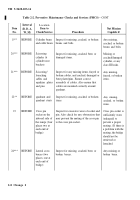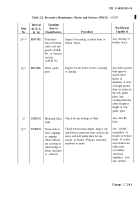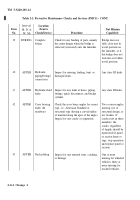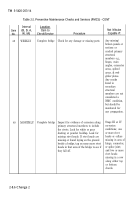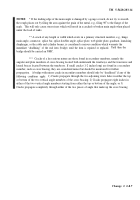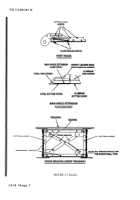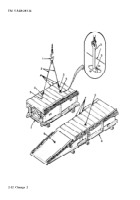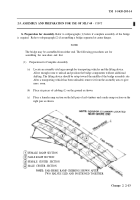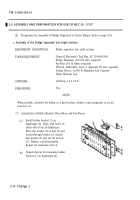TM-5-5420-203-14 - Page 55 of 298
TM 5-5420-203-14
NOTES:
* If the leading edge of the main angle is damaged by a gouge or nick, do not try to smooth
the rough places out by filing the area against the grain of the metal, e.g., filing 90
o
to the flange of the
angle.
This will only cause stress risers which will result in a cracked or broken main angle when placed
under the load of tanks.
** A crack of any length or width which exists in a primary structural member, e.g., hinge,
main angle, connector, splice bar, splice doubler angle, splice plate, web girder plate, quadrant, launching
diaphragm, or the cable and cylinder beams, is considered a serious condition which warrants the
immediate “deadlining” of the end item (bridge) until the item is repaired or replaced.
Until then the
bridge should be carried an NMC.
***
Cracks of a less serious nature are those found in secondary members, namely the
angular and plate members of cross-bracing located both underneath the treadways and the transverse and
lateral braces located between the treadways. If small cracks (1-2 inches long) are found in a secondary
member, such as cross bracing, they are considered minor but should be monitored for further
propagation.
A bridge with minor cracks in secondary members should only be “deadlined” if any of the
following conditions apply:
1) Cracks propagate through the two adjoining rivets holes in either the top
or bottom of the two vertical angle members of the cross bracing; 2) Cracks propagate eight inches in
either of the two vertical angle members starting from either the top or bottom of the angle; or 3)
Cracks propagate completely through either of the two pieces of angle that make up the cross bracing
Change 2 2-8.7
Back to Top




